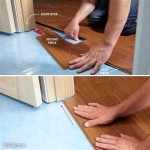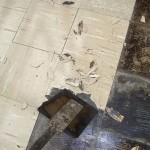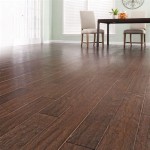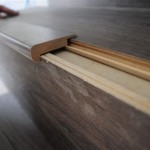Grades of Hickory Hardwood Flooring: A Comprehensive Guide
Hickory hardwood flooring is a popular choice for homeowners and builders alike, lauded for its durability, distinctive grain patterns, and natural beauty. However, the selection process can be complicated by the various grades assigned to hickory flooring, each reflecting different qualities, characteristics, and aesthetic appearances. Understanding these grades is crucial for making an informed decision and ensuring satisfaction with the final flooring installation. This article will provide a comprehensive overview of the grading system used for hickory hardwood flooring, outlining the key distinctions between each grade and helping consumers choose the right option for their needs and preferences.
The National Oak Flooring Manufacturers Association (NOFMA), now the National Wood Flooring Association (NWFA), established the standards for hardwood flooring grades, and while these primarily focus on oak, they are often adapted and applied to other hardwood species, including hickory. These grading systems primarily assess the visual appearance of the wood, taking into account factors such as the size and frequency of knots, the presence of mineral streaks, variations in color, and the occurrence of other natural characteristics. These factors directly impact the appearance and overall cost of the flooring.
Understanding Key Grading Factors
Several key factors are considered when grading hickory hardwood flooring. These characteristics contribute to the overall aesthetic and impact the cost and usage considerations. While exact definitions may vary slightly between manufacturers, the general principles remain consistent.
Knots: Knots are a defining characteristic of wood, representing the points where branches grew from the tree trunk. The size, number, and condition of knots are important grading criteria. Smaller, tight knots that are sound and don't detract significantly from the wood's structural integrity are generally acceptable in higher grades. Larger, loose, or open knots, which may require filling, are more common in lower grades. The presence of knots adds character and a rustic feel to the floor, but excessive or poorly placed knots can compromise the flooring's stability and appearance.
Color Variation: Hickory exhibits a wide range of natural color variation, from creamy whites and light yellows to rich browns and even reddish hues. Higher grades often feature greater uniformity in color, while lower grades embrace more dramatic contrasts. Some homeowners prefer the consistent look of a select grade, while others appreciate the unique character and visual interest that comes with a more varied palette. The preference for color variation is a subjective one, but it should be considered in light of the overall design aesthetic of the room.
Mineral Streaks: Mineral streaks are naturally occurring discolorations in the wood caused by mineral deposits absorbed by the tree during its growth. These streaks appear as dark lines or streaks running along the grain. Like knots, mineral streaks can add character and visual interest to the floor. Higher grades may have fewer or less prominent mineral streaks, while lower grades may feature more pronounced streaks. The acceptability of mineral streaks depends on personal preference and the desired aesthetic.
Grain Pattern: The grain pattern refers to the arrangement and direction of the wood fibers. Hickory typically exhibits a pronounced and distinctive grain pattern, which is one of its attractive features. Variations in grain pattern also contribute to the overall aesthetic. Higher grades are sometimes selected for having more consistent grain patterns, while lower grades may exhibit more irregular or swirling patterns. The choice depends on the desired level of uniformity and the visual impact the homeowner seeks.
Defects and Imperfections: Beyond the factors mentioned above, other defects and imperfections can influence the grade of hickory flooring. These can include checks (small splits in the wood), splits, cracks, and machine marks. Higher grades are generally free from these types of defects, while lower grades may have some imperfections. Extensive defects can compromise the structural integrity and appearance of the flooring, and should be carefully evaluated before installation. Repairing defects might also be considered for lower graded hickory hardwood flooring.
Major Grades of Hickory Hardwood Flooring
The specific names and descriptions of hickory flooring grades can vary slightly between manufacturers and suppliers. However, the following are the most common grade classifications and their defining characteristics:
Select and Better Grade: This is the highest grade of hickory hardwood flooring and features the most uniform appearance. It exhibits minimal color variation, few small, tight knots, and very few mineral streaks or other imperfections. Select and Better grade floors have a clean and sophisticated look, making them ideal for formal living spaces and contemporary designs. The wood is typically carefully selected to ensure consistent grain patterns and minimal character marks. This grade commands the highest price due to its rarity and superior appearance.
#1 Common Grade (also known as Character Grade): This grade offers a balance between quality and character. It features more color variation than Select and Better grade, with a wider range of hues and shades. It also allows for more numerous and slightly larger knots, as well as some mineral streaks and other natural character marks. #1 Common grade hickory flooring provides a more rustic and casual feel, while still maintaining a relatively clean and consistent overall appearance. This grade is a popular choice for homeowners who appreciate natural character and want a floor that is both durable and visually appealing.
#2 Common Grade (also known as Rustic Grade): This grade showcases the most rustic and character-rich appearance of hickory hardwood flooring. It exhibits significant color variation, numerous and larger knots (some of which may be open or require filling), prominent mineral streaks, and other natural imperfections. #2 Common grade flooring provides a very distinctive and unique look, with each plank telling its own story. This grade is often chosen for homes with a farmhouse, cottage, or rustic style. While this grade is more affordable than Select and Better or #1 Common, it requires careful installation and may involve more waste due to the presence of defects.
Cabin Grade (also known as Tavern Grade): This is the lowest grade of hickory hardwood flooring and typically contains a significant number of defects, imperfections, and color variations. While not always formally graded, cabin grade is often sold at a deeply discounted price. It may include large knots, splits, cracks, and other structural issues that require significant patching or repair. While it can be used for flooring, it demands very selective sorting and precise installation. Cabin grade hickory flooring is often used in utility areas, workshops, or other spaces where appearance is a secondary concern. This grade requires a high level of skill to install effectively and may result in a substantial amount of waste. It is important to consider this grade only if the installer is highly skilled.
Factors to Consider When Choosing Hickory Flooring
When selecting the appropriate grade of hickory hardwood flooring, several factors should be considered to ensure that the chosen option meets the homeowner's needs, preferences, and budget.
Budget: The grade of hickory flooring directly impacts its cost. Select and Better grade is the most expensive, followed by #1 Common, #2 Common, and Cabin Grade. Homeowners should establish a budget before starting their search and consider the cost of installation, finishing, and any necessary repairs or maintenance.
Desired Aesthetic: The desired aesthetic of the room or home is a crucial consideration. Homeowners who prefer a clean, sophisticated look may opt for Select and Better grade, while those who appreciate rustic character may prefer #1 or #2 Common grade. Consider the overall design style of the space and choose a grade of hickory flooring that complements the existing decor.
Room Usage: The intended use of the room should also be considered. High-traffic areas, such as hallways and living rooms, may benefit from the durability of a higher-grade hickory flooring, while less frequently used spaces may be suitable for a lower grade. Consider the amount of wear and tear the flooring will be subjected to and choose a grade that can withstand the demands of the space.
Installation Skills: The level of installation skill required varies depending on the grade of hickory flooring. Select and Better grade is generally easier to install due to its consistency and lack of defects, while lower grades may require more careful sorting, cutting, and patching. If the homeowner plans to install the flooring themselves, they should assess their skill level and choose a grade that is within their capabilities. Hiring a professional installer is recommended for lower grades, as their expertise can ensure a successful and aesthetically pleasing result.
Finishing Options: The choice of finish can also influence the overall appearance of the hickory flooring. Lighter finishes can highlight the natural color variations and grain patterns, while darker finishes can create a more uniform and sophisticated look. Consider the desired aesthetic and choose a finish that complements the chosen grade of hickory flooring.
Beyond Visual Grades: Other Considerations
While visual grading is the primary method for classifying hickory hardwood flooring, other factors should also be considered when making a purchase decision. These factors relate to the manufacturing process, the source of the wood, and its overall quality:
Wood Source and Sustainability: Consider the origin of the hickory hardwood and whether it is sourced from responsibly managed forests. Look for certifications from organizations like the Forest Stewardship Council (FSC), which ensure that the wood is harvested sustainably and ethically. Choosing sustainably sourced flooring supports responsible forestry practices and helps protect the environment.
Manufacturing Quality: The quality of the manufacturing process can significantly impact the durability, stability, and appearance of the hickory flooring. Look for flooring that is milled with precision and adheres to industry standards. Check for consistent thickness, width, and length, as well as proper tongue-and-groove fit. A well-manufactured floor will ensure a smoother and more trouble-free installation.
Kiln Drying Process: Proper kiln drying is essential for ensuring the stability and longevity of hickory hardwood flooring. The wood must be dried to the appropriate moisture content to prevent warping, cupping, or gapping after installation. Look for flooring that has been kiln-dried using a controlled process and meets industry standards for moisture content. Inquire about the manufacturer's drying process and their quality control measures.
By carefully considering all of these grading criteria and other factors, consumers can make an informed decision and select the hickory hardwood flooring that best meets their needs, preferences, and budget. Understanding the nuances of the grading system empowers homeowners to choose a floor that not only looks beautiful but also performs well and lasts for many years to come.

Hickory 1 Common Grade Unfinished Solid Hardwood Flooring Floor Depot

Hickory Rustic Grade Prefinished Solid Hardwood Flooring Floor Depot

Hickory Hardwood Flooring Reallyfloors America S Est

Hickory Select And Better Grade Unfinished Hardwood Flooring Floor Depot

Flooring 101 Understanding Wood Grades Carlisle Wide Plank Floors

2 1 4 X 3 Hickory Character To 10 Unfinished Solid Hardwood Flooring

Design Considerations For A Wide Plank Hickory Floor Carlisle Floors

5 X 3 8 Hickory Prefinished Natural Nature Wood Floors

Discount 6 X 3 4 Hickory Character Natural Prefinished Solid Hardwood Flooring By Hurst Hardwoods

3 X 4 Hickory 2 Common Unfinished Solid Hardwood Flooring
Related Posts








